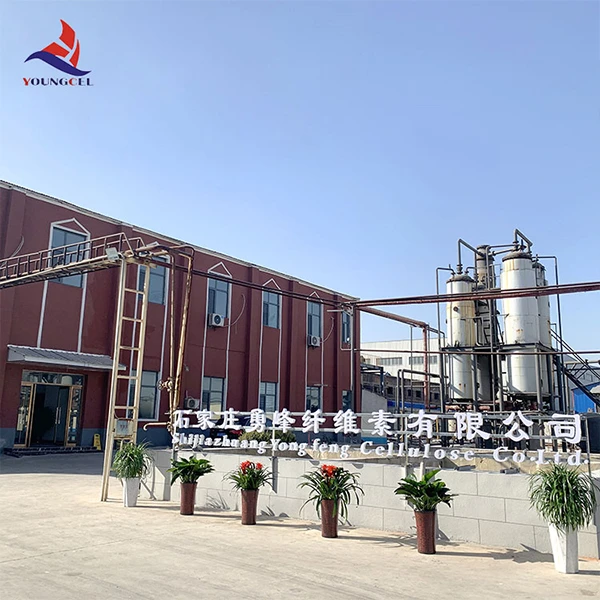Understanding China’s HPMC Market Trends and Opportunities
Hydroxypropyl Methylcellulose (HPMC) is a versatile and essential cellulose ether widely used in various industries, including pharmaceuticals, food, construction, and cosmetics. As China emerges as a significant player in the global HPMC market, it is essential to explore the dynamics, trends, and opportunities that shape this sector.
Overview of HPMC
HPMC is derived from cellulose and is known for its excellent adhesive properties, water retention, and thickening capabilities. In the pharmaceutical industry, it is utilized as a binder, film-former, and thickening agent in various formulations, including tablets, capsules, and topical applications. In the food industry, HPMC serves as a food thickener, stabilizer, and emulsifier, while in construction, it is essential for enhancing the workability of cement-based materials.
Growth Drivers in China
The demand for HPMC in China is driven by several factors
1. Rapid Industrialization As industrial sectors in China, such as construction and pharmaceuticals, continue to grow rapidly, the demand for high-quality HPMC as a key ingredient has surged. The real estate boom, along with significant infrastructure projects, fosters the growth of the construction sector, ultimately increasing HPMC consumption.
2. Pharmaceutical Advancements China is becoming a hub for pharmaceutical research and development. As the country invests in new drug formulation technologies and manufacturing processes, HPMC’s role as a crucial excipient has grown tremendously. The increase in generic drug production further fuels the demand for HPMC.
3. Food Industry Expansion The Chinese food processing industry is evolving quickly, characterized by an increase in demand for processed foods. HPMC is gaining traction as a clean label ingredient, aligning with consumer preferences for healthier options. Its functionalities cater to the need for improved texture, stability, and shelf-life in food products.
4. Cosmetic and Personal Care Products The rising disposable income and changing consumer preferences have led to an increase in the demand for personal care and cosmetic products. HPMC's thickening and stabilizing properties make it a preferred ingredient in many formulations, ranging from creams and lotions to shampoos.
china hpmc

Challenges in the Market
Despite the growth prospects, the HPMC market in China faces challenges. The market is increasingly competitive, with both domestic and international players vying for market share. Price fluctuations in raw materials can impact HPMC production costs, affecting overall profitability. Additionally, regulatory compliance and quality control are critical challenges, as stringent guidelines must be met, particularly in the pharmaceutical sector.
Opportunities Ahead
As the market evolves, several opportunities present themselves
1. Innovative Applications Continued research and development can lead to innovative uses of HPMC across different sectors. For instance, the integration of HPMC in biopharmaceuticals and advanced drug delivery systems promises significant advancements.
2. Sustainability Trends With a global shift towards sustainable and eco-friendly products, HPMC's biodegradable properties position it favorably within consumer trends. Manufacturers focusing on sustainable practices are likely to capture a larger market share.
3. Export Potential As foreign markets increasingly seek high-quality HPMC, opportunities for exportation are expanding. Chinese manufacturers can leverage their growing production capabilities to meet international demand.
Conclusion
The HPMC market in China is on a promising trajectory, fueled by industrial growth, evolving consumer preferences, and the emergence of innovative applications. While challenges exist, the potential for growth remains substantial. Stakeholders in this domain must stay abreast of market trends and invest in sustainable practices to leverage the opportunities that lie ahead. As this market continues to evolve, it will undoubtedly be a focal point for both domestic and global players in the years to come.
-
Rdp Powder: Key Considerations for Wholesalers in the Building Materials IndustryNewsJul.08,2025
-
Key Considerations for Wholesalers: Navigating the World of Hpmc - Based ProductsNewsJul.08,2025
-
Hpmc Detergent: Key Considerations for WholesalersNewsJul.08,2025
-
Key Considerations for Wholesalers: China Hpmc For Tile Adhesive, Coating Additives, Concrete Additives, and MoreNewsJul.08,2025
-
Crucial Considerations for Wholesalers: Navigating the World of Construction MaterialsNewsJul.08,2025
-
Key Considerations for Wholesalers Sourcing Additive For Cement, Additive For Concrete, Additive For Putty from Additive Manufacturer Shijiazhuang Gaocheng District Yongfeng Cellulose Co., Ltd.NewsJul.08,2025




